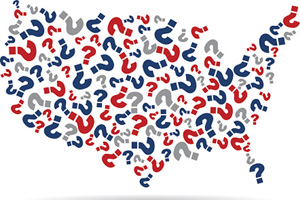
Unlike in other countries, in the United States there isn’t a government body or any regulation that dictates the recognition of foreign institutions or mandates foreign credential equivalencies. Higher education institutions (HEIs) have a great
amount of autonomy, which can be a mixed blessing to the international admissions officer and the foreign credential evaluator. On one hand, it allows for HEIs to make the admissions and transfer credit decisions that best fit their type, size, mission,
and level. On the other, it puts the onus on the HEI to make these decisions without any regulations to guide them.
Rather, HEIs follow the standards of best practice that are published in a variety of resources, such as AACRAO EDGE.
These resources provide general guidelines, placement recommendations, and best practices to help HEIs make admissions decisions that place international students accurately, fairly, and support their academic success.
This methodology has worked successfully for going on 70 years now. IIE’s publication Open Doors demonstrates that international students continue to flock to the
United States to study. This is either because of or in spite of the unstructured way that we “do” international admissions and transfer credit in the US.
But can the US international admissions and credential evaluation community maintain this unstructured way of working? In a world driven more and more by technology, will digital transcripts, increased academic mobility, and the push for mutual recognition
change what our “business as usual” looks like?
For example, at this very time, the 193 member countries of UNESCO are finalizing a Global Convention On Recognition of Higher Education Qualifications. This convention, when ratified, and although not binding, will help to regulate the growth of inter‐regional
student mobility, provide for the transparent and fair recognition of qualifications, enhance the quality of higher education, and bring coherence to disparate recognition processes. Is there something here from which the US international admissions
community could learn?
AACRAO International wants to examine this question more closely,
and in order to do that, we are planning a symposium for late summer to begin the conversation. We invite international admissions officers, foreign credential evaluators, registrars, and others whose job responsibilities touch any part of the international
admissions process, to join us. We welcome all levels of experience, because we value everything from the fresh perspective of new professionals to the depth of wisdom and experience that long-time colleagues bring.
If you’d like to be part of the conversation, mark your calendar on August 2, 2019, for AACRAO’s Fall Symposium,
"Global Recognition in International Admissions and Credential Evaluation: Is It Possible? Is it Necessary?"
If you have questions about the AACRAO International Fall Symposium, please contact Julia Funaki or LesLee Clauson Eicher.